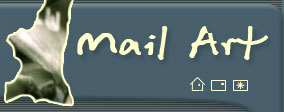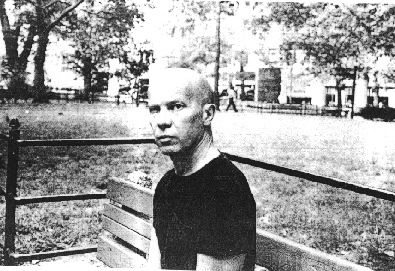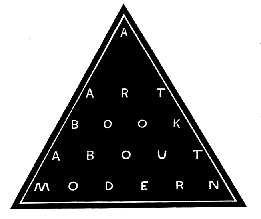 |
 |
Ray Johnson He saw his collages as one piece of a complex spectrum of activities that included drawings, his use of the mails, telephone conversations, performance art, poetry and real life, all punctuated with a touch of zen and/or Tao. As a contemporary (and correspondent) of most of the artists participating in Fluxus, Happenings, Neo-Dada, Judson Dance Church and other intermedia activities of the 1950s, 60s, 70s and 80s, he was instrumental in transforming the international avant-garde into a coherent network. In doing so, he became the center of a cult of personality that developed inadvertently among younger artists in over fifty countries. Raymond Edward Johnson was born in 1927 in Detroit, Michigan. His first experiences using the mail as an art medium stretch back to 1943 with his friend Arthur Secunda. From 1946-48 he studied alongside Robert Rauschenberg, Cy Twombly and others at the experimental Black Mountain College in North Carolina with faculty members Joseph Albers, Robert Motherwell, John Cage, Merce Cunningham, Buckminister Fuller, and Elaine and Willem DeKooning, among others. He moved to Manhattan in the late 1940s and showed annually with the American Abstract Artists which included his friend Ad Reinhart among its members. By 1955, the trailblazing Johnson was painting over and cutting up images of Elvis Presley. It would be seven long years later Johnson's friend Andy Warhol would immortalize Elvis for the first time. By then Johnson had moved on. The trailblazing Johnson was a fixture on the Manhattan scene, heralded as an innovator by the heroes-to-be of Pop and Fluxus. By his own admission, the pre-Factory Warhol crony, Billy Name, borrowed from Johnson and a handful of others who attended Black Mountain College to provide the creative atmosphere that Andy bounced off of.
"Ray didn't talk about it, he just did it." says long-time
friend Toby Spiselman, "That's why you don't find art magazines
lying around quoting the art philosophy of Ray Johnson." Johnson's iconoclastic blend of Taoist humility and spontaneous improvization ran contrary to the demands of the marketplace. 'There was no perusal of the meaning of these pieces," Ray told Mark Bloch in 1991,"They just wanted them as objects. 'Aren't these nice! Put them in a museum with nice lighting.' Not the ideas... I wanted to paste things on railroad cars. Nothing to be seen by anyone except coyotes." But when the Pop Art gravytrain appeared instead, "I consciously burned everything in Cy Twombly's fireplace. Those were early nothings... Destroying them was the logical thing to do as a statement." Johnson chose instead to give his art away via his Correspondence School, using a rich pallette of bunny head portraits and verbal-visual puns and rhymes carefully designed to confound and amuse the recipient. His love of collaboration and a habit of recycling old works into multi-layered new ones resulted in a flurry of "mail art" circling the globe with instructions to "add to and return to Ray Johnson." In the early seventies the Whitney Museum asked Ray to invite members of his Correspondance School for what was possibly the first mail art show, and certainly the first one in a major institution. Ray once told Mark Bloch, "For accuracy's sake Marcia Tucker should be credited with the policy of the New York Correspondence School. She took over as an institution. I was merely the person inviting 116 people to be in that show. It said 'Please send to the Whitney Museum (etc.)...' There was no explanation that they'd be exhibited, that they'd be catalogued. They just sent it." Ray was referring to a now standard mail art practice that all work received is exhibited and that all participants are sent documentation of the show in return. Some thirty years and 50 countries later, mail art continues to expand from Johnson's original impetus and in addition to shows and one-to-one correspondence, it has spawned everything from "correspondence dinners" and mail art "congresses" to the omnipresent "zine" network to the do-it-yourself audio cassette exchanges that helped spread punk rock. In fact, if mail art can be considered a movement, none other has lasted longer or reached further. For decades, in the legendary privacy of his own home in Locust Valley, Ray worked from morning until night, often with the television on in the background, always making up new incarnations of his CorresponDANCE School, (the latest one I had heard of being the "Taoist Pop Art School"). In the last years of his life, Ray Johnson used inexpensive throw-away snapshot cameras as a tool to make pictures of "set ups" in natural settings of his silhouettes, portraits and other 2 and 3 dimensional objects. In addition to his mail activity, Johnson continued to do events and make collages until the very end. His death itself may have been his final "event". He told several people in the last days of his life that he was working on his "greatest work". This man who had playfully announced his own death many times, died for real January 13, 1995.
He was pulled from the water at 12:35pm Saturday afternoon, January 14. He was fully clothed- in a typical outfit for him- levi's, a wool sweater, work boots and a wind breaker. A "Paul Is Dead" atmosphere has permeated the press since his curious death which Bloch has called the one and only "rayocide." Art mavens quibble about auction prices while correspondents compare notes, sifting through old letters for clues to why he may have taken his own life. Created by The Panman (markb@echonyc.com) |

 Meanwhile,
Johnson called his own collages "moticos" and stored them
in cardboard boxes to be shown in Grand Central Station or on the
street. Art critic Suzi Gablick wrote in the book "Pop Art
Redefined," "The random arrangement... on a dilapidated
cellar door in Lower Manhattan may even have been the first informal
happening."
Meanwhile,
Johnson called his own collages "moticos" and stored them
in cardboard boxes to be shown in Grand Central Station or on the
street. Art critic Suzi Gablick wrote in the book "Pop Art
Redefined," "The random arrangement... on a dilapidated
cellar door in Lower Manhattan may even have been the first informal
happening."
 He
presumably drowned after a jump from the bridge in Sag Harbor, New
York about a two hour drive from his home in Locust Valley. He was
last seen by two teenage girls, backstroking away into Sag Harbor
Cove two hours after checking into the Barron's Cove Inn in Sag
Harbor, near the end of Long Island, NY. The weather was unusually
mild for that time of year. Ray was fond of the water. He often
took walks along the shore at Oyster Bay near his home. Though he
turned 67 years old on the 16th of October, he was going strong,
remarkably fit for a man of that age.
He
presumably drowned after a jump from the bridge in Sag Harbor, New
York about a two hour drive from his home in Locust Valley. He was
last seen by two teenage girls, backstroking away into Sag Harbor
Cove two hours after checking into the Barron's Cove Inn in Sag
Harbor, near the end of Long Island, NY. The weather was unusually
mild for that time of year. Ray was fond of the water. He often
took walks along the shore at Oyster Bay near his home. Though he
turned 67 years old on the 16th of October, he was going strong,
remarkably fit for a man of that age.